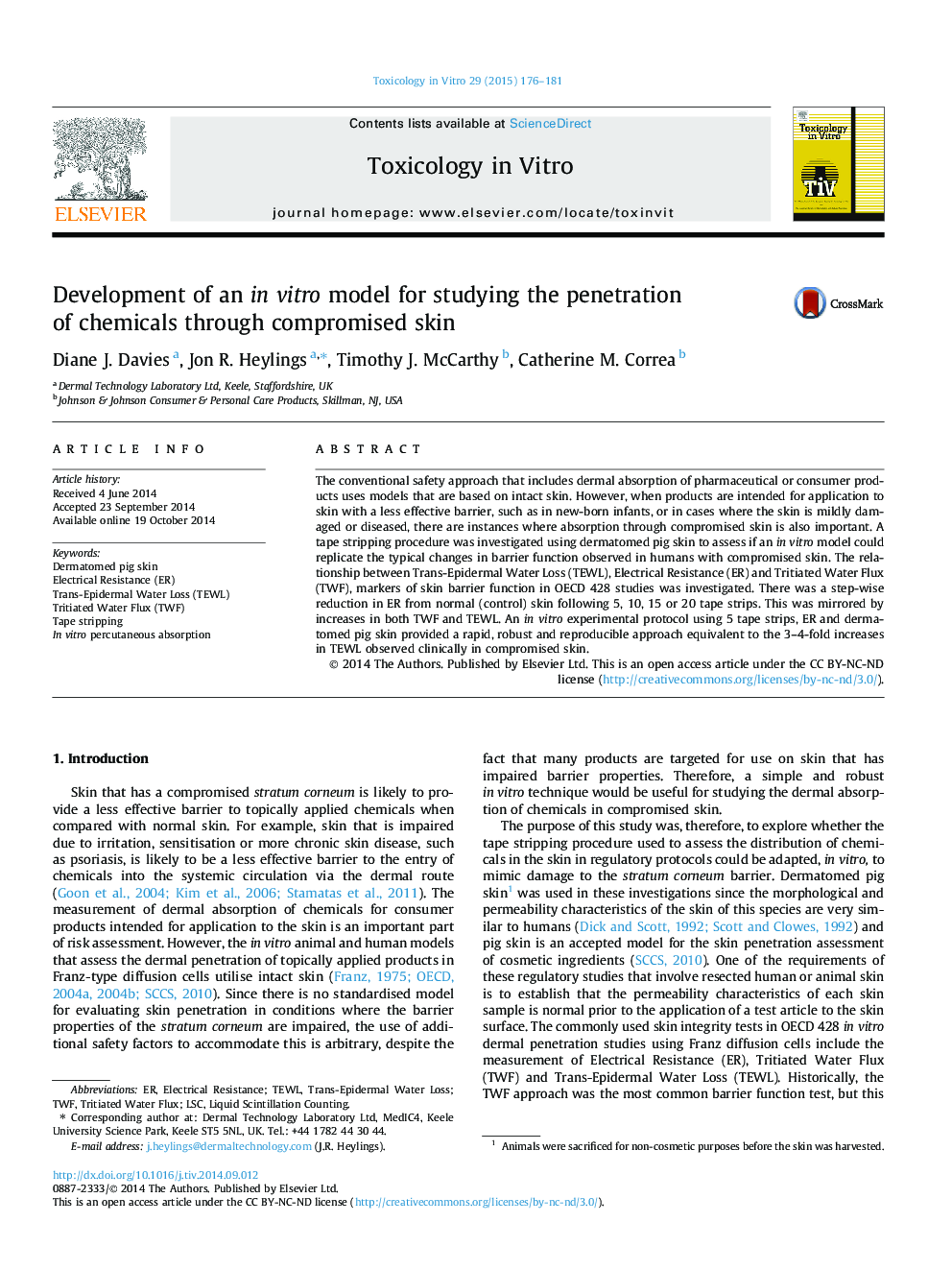| Article ID | Journal | Published Year | Pages | File Type |
|---|---|---|---|---|
| 5861554 | Toxicology in Vitro | 2015 | 6 Pages |
â¢Tape stripping has been evaluated to develop an in vitro model of compromised skin.â¢Electrical Resistance, Trans-Epidermal Water Loss and Tritiated Water Flux were used.â¢Skin stripping regimes were used to remove different proportions of the stratum corneum.â¢Electrical Resistance proved to be a rapid and robust model for compromised skin.
The conventional safety approach that includes dermal absorption of pharmaceutical or consumer products uses models that are based on intact skin. However, when products are intended for application to skin with a less effective barrier, such as in new-born infants, or in cases where the skin is mildly damaged or diseased, there are instances where absorption through compromised skin is also important. A tape stripping procedure was investigated using dermatomed pig skin to assess if an in vitro model could replicate the typical changes in barrier function observed in humans with compromised skin. The relationship between Trans-Epidermal Water Loss (TEWL), Electrical Resistance (ER) and Tritiated Water Flux (TWF), markers of skin barrier function in OECD 428 studies was investigated. There was a step-wise reduction in ER from normal (control) skin following 5, 10, 15 or 20 tape strips. This was mirrored by increases in both TWF and TEWL. An in vitro experimental protocol using 5 tape strips, ER and dermatomed pig skin provided a rapid, robust and reproducible approach equivalent to the 3-4-fold increases in TEWL observed clinically in compromised skin.
